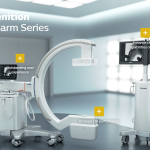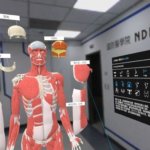AI technologies are transforming healthcare delivery, particularly in radiology and cancer imaging. AI-enabled radiology software enables faster cancer imaging reads, simplifying evaluation for radiologists. AI enhances accuracy by identifying complex patterns in medical images, leading to earlier and more accurate diagnoses. This reduces radiologists’ workload, improving their well-being and allowing them to focus on critical cases. AI also improves patient care by facilitating personalized medicine, real-time monitoring, and innovative treatments tailored to individual needs. The integration of AI in radiology is revolutionizing the industry, enabling faster, more accurate, and improved patient care.
Healthcare delivery is undergoing a dramatic transformation as AI technologies begin to take hold in the care setting. The technology is revolutionizing radiology, particularly in ED triage, early disease detection, and now in cancer imaging and reporting. These fields are particularly suited to improvements using AI, given their antiquated workflows and resistance to change over the decades. But how – specifically – is AI transforming this industry for good?
Using AI for advanced cancer patient analysis will hopefully soon become the standard of care, as well as a game changer for the industry. It seems to be cycling between hype and progress now, but over time the use of AI will be an indispensable transformation.
Here is how we are currently seeing the impact in the industry.
Want to publish your own articles on DistilINFO Publications?
Send us an email, we will get in touch with you.
Speed:
AI-enabled radiology software can consistently deliver cancer imaging reads in half the time. For radiologists, this creates a simplified and streamlined cancer patient evaluation. Single-click algorithms that automate tumor identification, measurement, and anatomic labeling can help improve workflows, accuracy and consistency – while drastically reducing read times.
Accuracy:
In recent years, healthcare providers have integrated AI into the diagnostic process to improve patient outcomes by enhancing accuracy and efficiency. One of the biggest benefits of AI in radiology is the ability to identify and analyze complex patterns in medical images that might be missed by the human eye. This leads to earlier and more accurate diagnoses, allowing for earlier treatment and better patient outcomes and care. Radiologists are some of the most tech-savvy physicians in healthcare. But for some reason, most still rely on a process that hasn’t changed in twenty years.
For example, when completing a cancer read, radiologists often have to individually search the patient history to identify which tumor targets to measure. Then, they manually measure and label those tumors – while dictating locations on images for translation into a text report. This tedious and inefficient process leaves radiologists strained and burnt out, in addition to exposing their work to compromising errors
Positive impact on radiologist well-being:
AI reduces the workload of radiologists, freeing them up to focus on more complex and critical cases. AI also has the potential to solve pain points like radiologist shortages, burnout, callbacks, and highly variable reporting. Advanced cancer reads are currently low- or no-margin work activity for radiology. By transforming this critical, complex task into a high-margin, high-value part of the radiologists’ day, the industry will be able to service patients faster and with better overall care.
Specifically in a clinical setting, cherry-picking worklists is a big problem, and advanced cancer reads too often languish on the board. AI can shorten the read time by half and reduce the read complexity. The result is un-cherry-picking, and it doesn’t require any worklist orchestration at all.
Better patient care:
As algorithms continue to advance and the amount of data available to train these algorithms grows, we will see improved accuracy and efficiency in the diagnostic process. AI is already playing an increasing role in the treatment of cancer, with the development of personalized medicine, real-time monitoring and improved drug discovery. By using AI to analyze imaging, we will be able to identify new and innovative treatments for specific cancers that are tailored to each patient’s needs.
It is an exciting time for radiology and cancer imaging, as many AI-focused products enter the market. Both radiology and healthcare, in general, will continue to require AI and tech innovations that enable radiologists to evaluate cancer patients much faster, with greater accuracy, fewer errors, and better communication to oncologists. AI can achieve it all.
Source: HitConsultant








